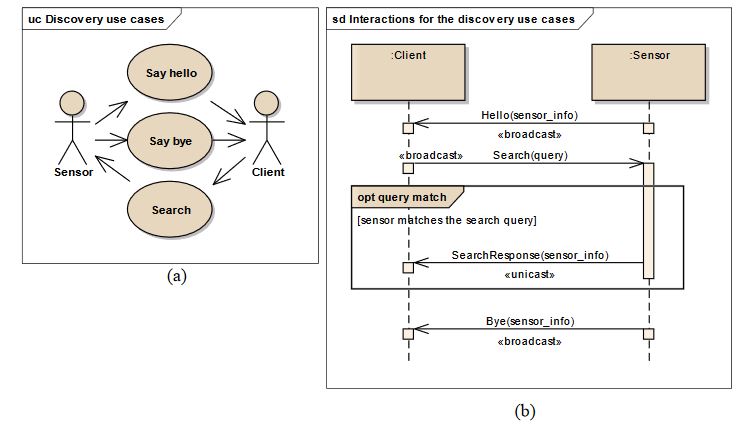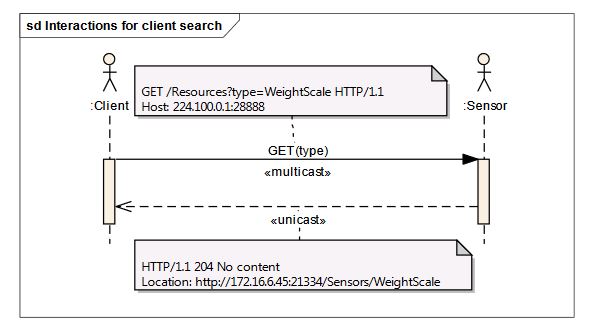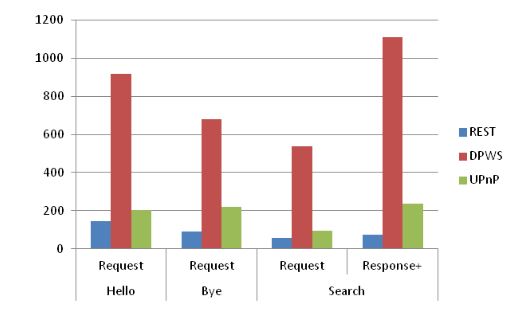ABSTRACT
Service provisioning in assisted living environments faces distinct challenges due to the heterogeneity of networks, access technology, and sensing/actuation devices in such an environment. Existing solutions, such as SOAP-based web services, can interconnect heterogeneous devices and services, and can be published, discovered and invoked dynamically.
However, it is considered heavier than what is required in the smart environment-like context and hence suffers from performance degradation. Alternatively, REpresentational State Transfer (REST) has gained much attention from the community and is considered as a lighter and cleaner technology compared to the SOAP-based web services. Since it is simple to publish and use a RESTful web service, more and more service providers are moving toward REST-based solutions, which promote a resource-centric conceptualization as opposed to a service-centric conceptualization.
Despite such benefits of REST, the dynamic discovery and eventing of RESTful services are yet considered a major hurdle to utilization of the full potential of REST-based approaches. In this paper, we address this issue, by providing a RESTful discovery and eventing specification and demonstrate it in an assisted living health care scenario. We envisage that through this approach, the service provisioning in ambient assisted living or other smart environment settings will be more efficient, timely, and less resource-intensive.
RELATED WORK
This section briefly comments on some related literature that studies the dynamic service provisioning issue using different mechanisms, such as OSGi, DPWS and UPnP. Some of the earlier works that motivate the use of REST to interconnect devices. The authors describe the data and services as resources like what REST promotes. The work in focuses on the discovery mechanism, which is described to be based on a resource repository (centralized). Sensors and actuators advertise themselves to this repository using the ATOM protocol.
RESTFUL APPROACH FOR DISCOVERY AND EVENTING

Figure 1. Discovery use cases (a) and behavior (b)
Figure 1b shows the interactions between clients and sensors in the mentioned discovery use cases. Sensors broadcast a Hello message containing their own information and location (Say hello use case) to the listening clients. On the other hand, clients can also broadcast messages for querying specific sensor types (Search use case). The matching sensors will reply to this query request by sending a unicast message to the client, describing themselves and providing their network location.

Figure 3 . Sequence diagram for client search
The interactions required for the―”Search” use case are described in Figure 3. A client can search for a specific sensor type by sending a multicast GET message to the virtual resource, which indicates the type of the sensor it is interested in. All the sensors that match the request shall reply to it by sending a unicast message to the client containing the sensor location.
EVALUATION

Figure 10. Comparison of message size (bytes) for discovery use cases
In the case of discovery, Figure 10 compares the message sizes for Hello, Bye and Search use cases as they are defined in the three targeted solutions (REST, DPWS, UPnP). The results shown in this figure are based on single message size for each type, without considering the multiple repetitions that are mandatory for the multicast messages used in Hello, Bye and Search request messages.

Figure 13. Demonstrating application deployment
The prototype demonstrates a distributed architectural deployment of the healthcare application as shown in Figure 13. The sensors layer is composed of a number of devices with heterogeneous communication capabilities and device-dependent protocols such as USB and Bluetooth serial communication profiles.
CONCLUSIONS
This paper proposed a RESTful discovery and eventing specification, which is a lightweight and efficient approach compared to existing service discovery and event management solutions. To the best of our knowledge this is the first RESTful approach in this direction. This work is described by specifying the RESTful resource tree structure, resource tree instantiation for sample event source and event listener, and interactions between resources of event source and event listener for both discovery and eventing mechanisms.
We evaluated the proposed approach with existing ones as per specification and found that the RESTful approach needs minimal message size for service discovery and eventing, which is very promising. We implemented the proposed technique in the context of an assisted living healthcare scenario for connecting heterogeneous sensor and actuator devices in order to obtain real-time health data from the inhabitants for better health monitoring.
The proposed approach described in this paper would be a suitable solution for many pervasive sensor-rich environments for dynamic service provisioning. Therefore, in the future we plan to demonstrate the applicability of our approach in various pervasive applications domain, and to study the requirements for safety and security that come together with the use of health related data.
Source: King Saud University
Authors: Jorge Parra | M. Anwar Hossain | Aitor Uribarren | Eduardo Jacob